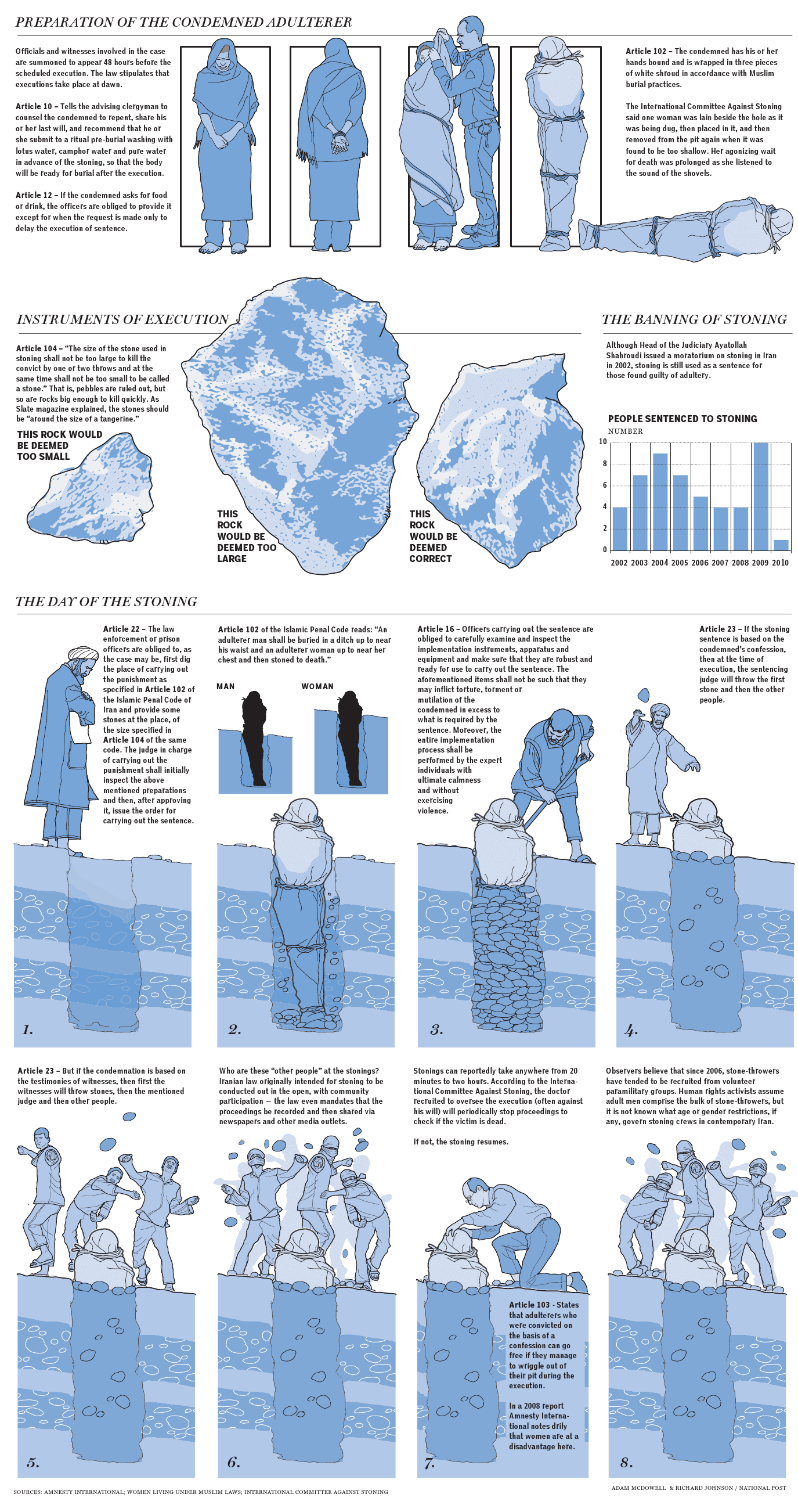It’s 2013 but women around the world are still being stoned to death. There are 15 countries in which stoning is either practiced or authorized by law, even if it has never been practiced. In Iran, Mauritania, Nigeria, Pakistan, Qatar, Saudi Arabia, Somalia, Sudan, the United Arab Emirates, and Yemen, stoning is a legal punishment. However, out of these countries, only in Iran, Pakistan and Somalia have stoning actually occurred.
Are you even aware of what stoning is and why it is practiced?
The infographic below details with the help of images and text that stoning (also known as lapidation) is a form of execution by which a group throws stones at a person until they are dead. Stoning is used as a punishment for adultery, or zina. It is a method used to control the sexuality and bodies of both men and women, but women are more often the victims. However, it should be noted that the punishment for adultery in the Quran is lashes, not stoning. In fact, nowhere in the whole of the Quran is stoning prescribed for any crime—though this is a point of endless debate for legal and religious scholars.
In Iran alone, as many as ten people were stoned to death in 2009 even though the Head of the Judiciary Ayatollah Shahroudi issued a moratorium in 2002.Human rights campaigners say Iran has one of the highest rates of executions in the world. Death by stoning came into use in Iran after the 1979 revolution.
In November 2012, Iranian authorities executed four women by stoning. Women are more likely to be found guilty of adultery than men – because the hegemonic interpretations of Islamic law, personal status laws, poverty, and illiteracy among women all increase the likelihood of their conviction, either in a court of law or by the community.
Typically under Islamic ruling, a man is buried up to his waist, while a woman is buried up to her neck. Those carrying out the verdict then throw stones until the person dies. The convicted person is wrapped in a shroud, placed into a pit, and buried. If the adultery was proven in court by confession, the judge has the responsibility of throwing the first stone. But if the case was proven through witnesses, they start first, followed by the judge, and then by any others who are present, the number of which cannot be less than three. The stones are then hurled one by one until the accused is killed. And if the person manages to wriggle out of the pit, she or he is set free.
The infogrpahic below explains the entire preparation of the condemned adulterer, the instrument of execution and the entire implementation process on the day of stoning.

Source: Reddit.com

